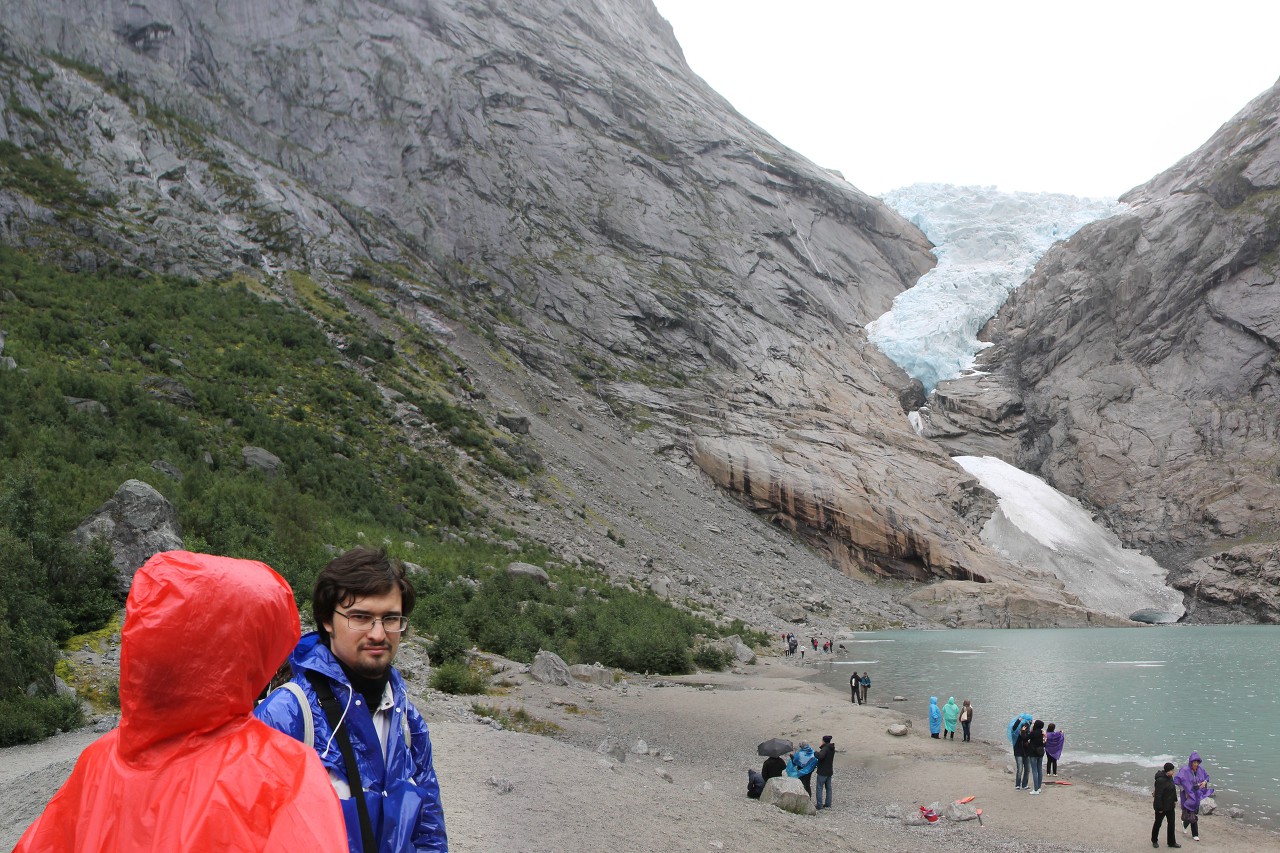Briksdalsbreen Glacier
Finally, after walking about two kilometers from the village of Briksdalen through the most picturesque valley of The same name, about 40 minutes later I almost reached the foot of the ice tongue.
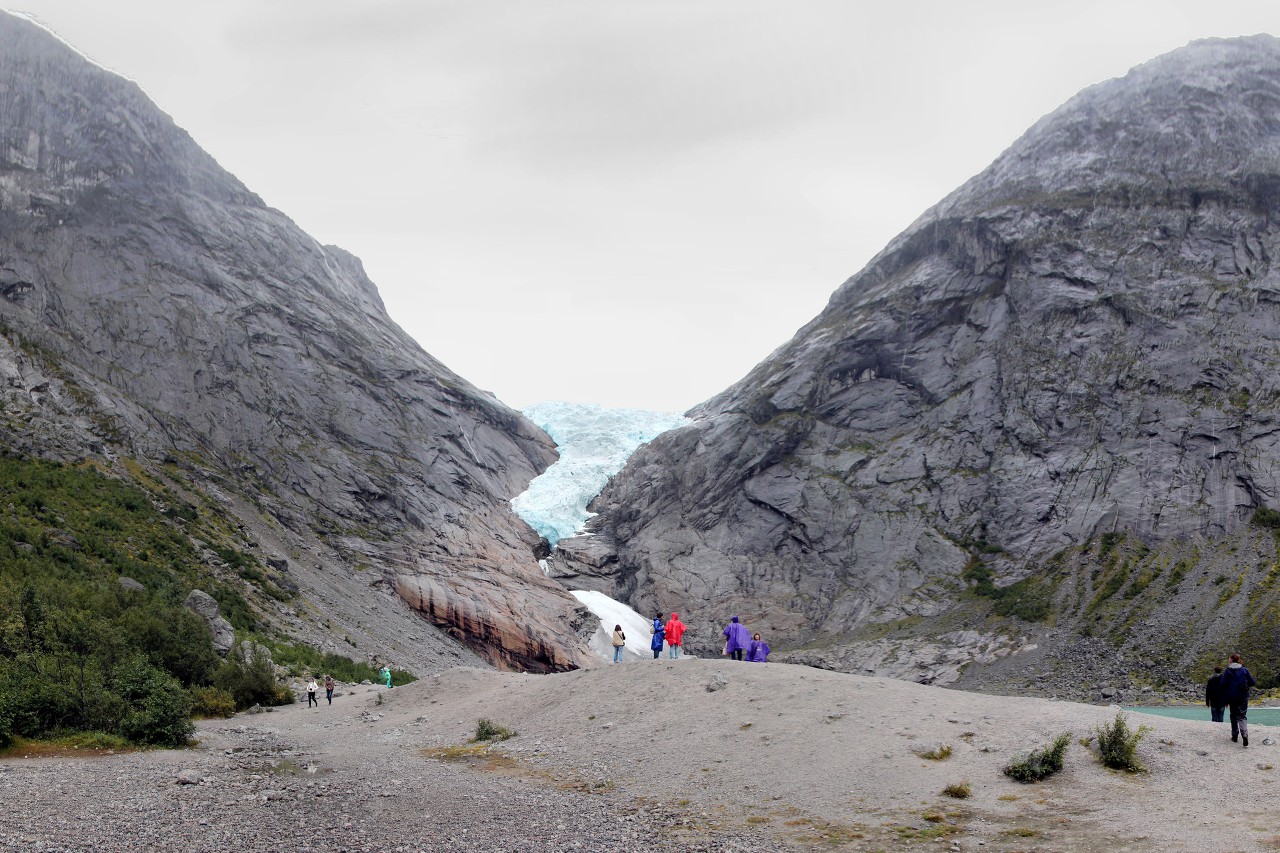
From a small hill, you can look at the gorge where ice has been sliding down for hundreds of thousands of years, and the emerald-colored lake formed as a result of its melting.
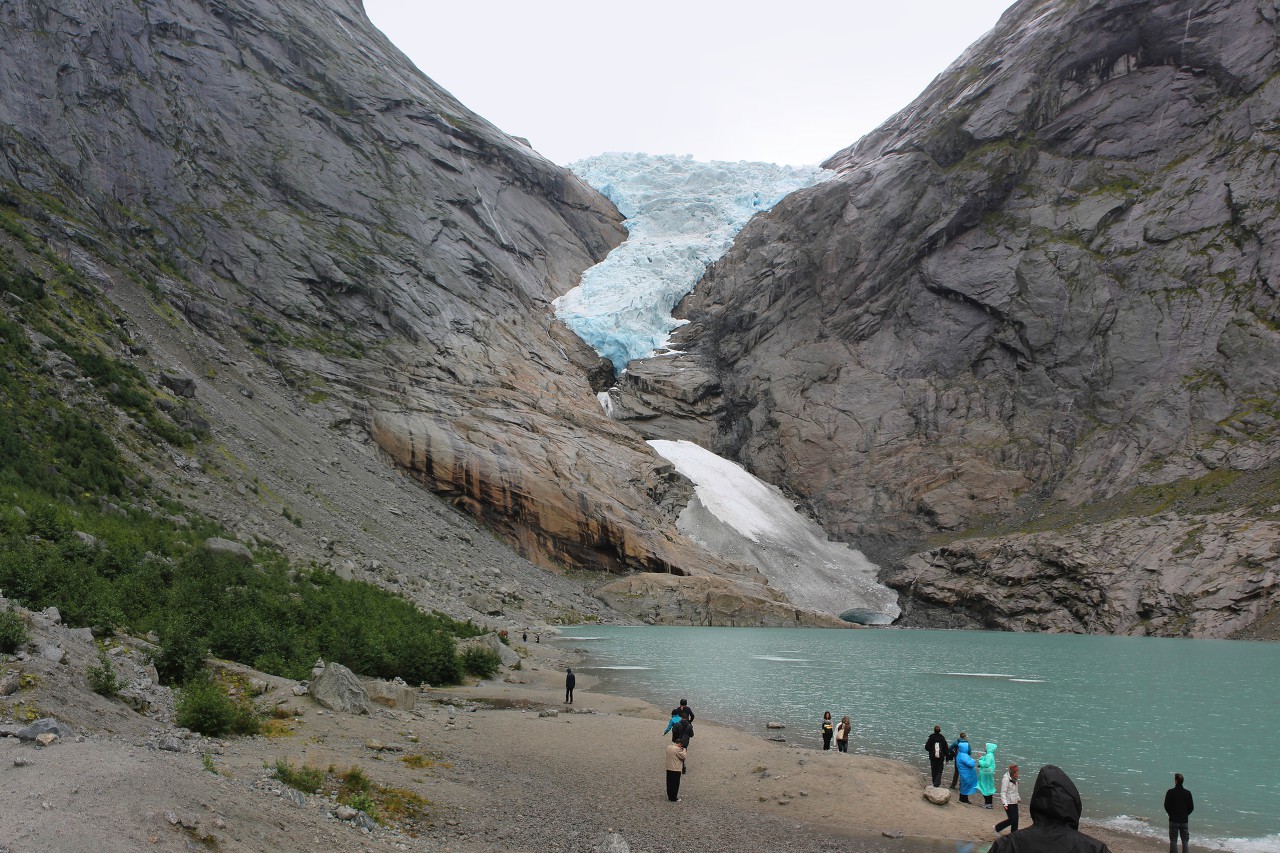
Giant glacier Jostedalsbreen, the largest in continental Europe, its area is more than 1300 square kilometers, the thickness of the ice in places reaches 600 meters, and its highest point is the peak Lodalskåpa height of 2083 meters. In 1991 Justedalsbreen received the status of a National park.
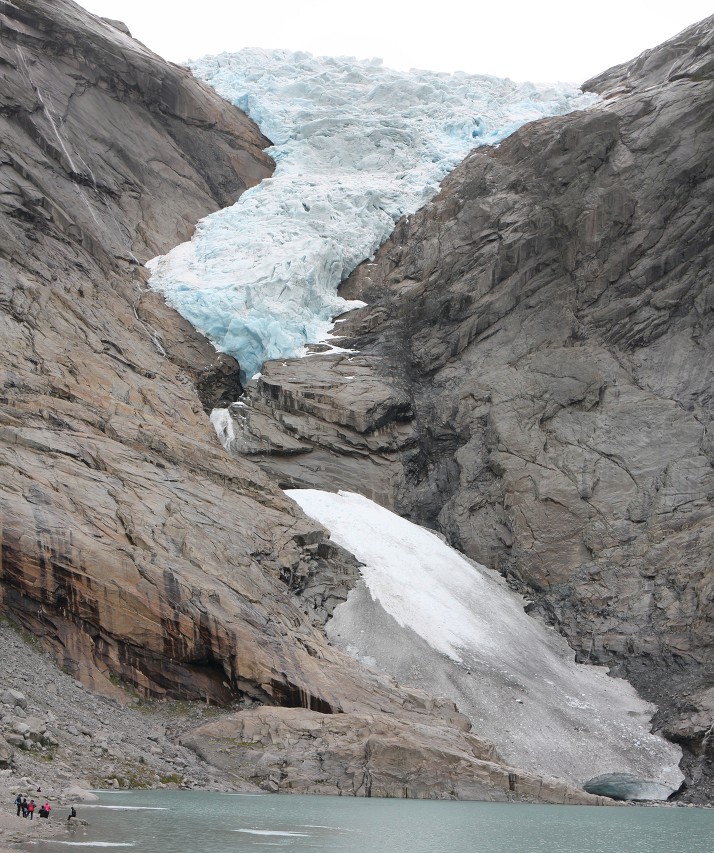
The Jostedalsbreen has around 50 sleeves, one of which we now see. The lower border of the Briksdalsbreen glacier sleeve lies at an altitude of only 347 meters, so it is considered one of the most easily accessible.
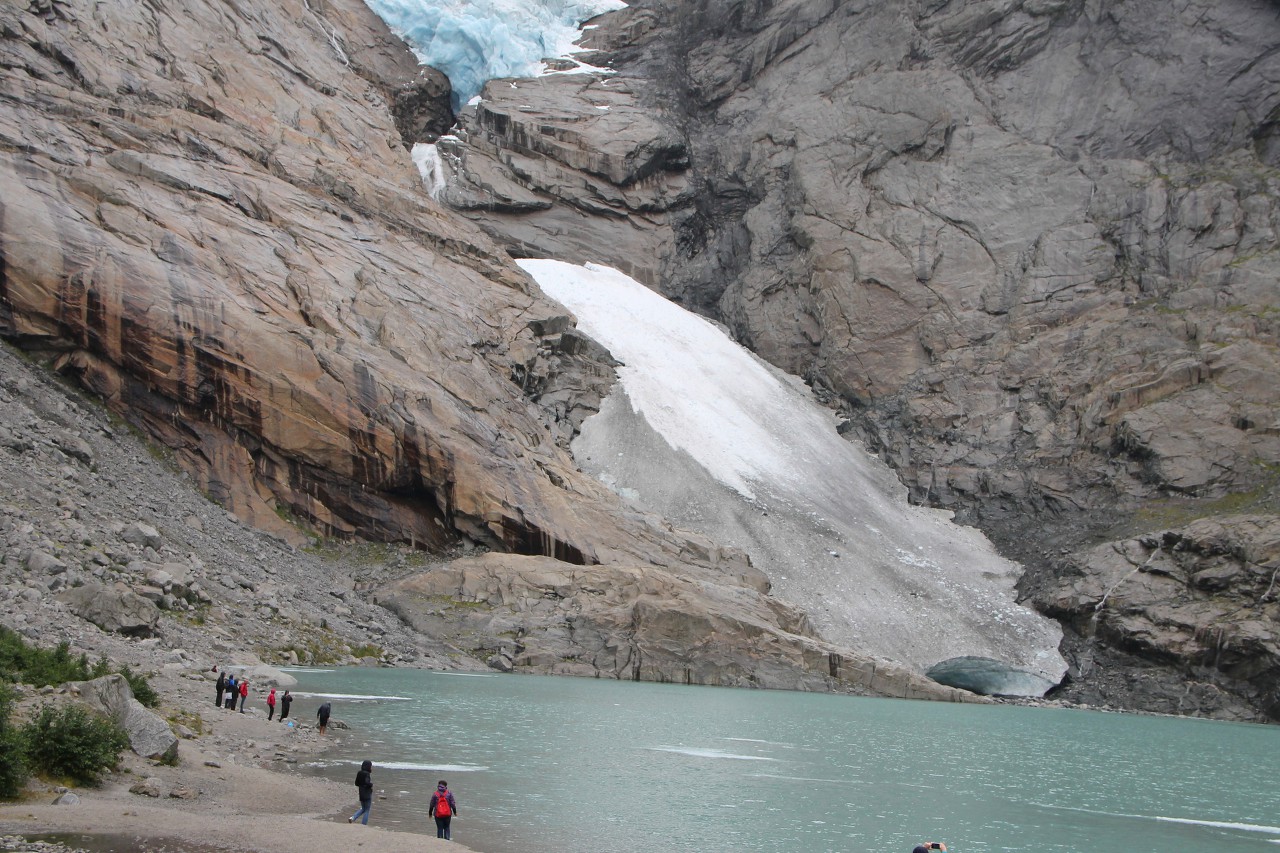
The first thing that attracts attention is the blue color of the ice masses. From the point of view of physics, this is explained simply - frozen water from the visible spectrum absorbs blue rays the least. But why is the snow white, even though it is also made up of ice crystals? Here, the number of air bubbles trapped inside the crystal during freezing is important. First-year ice also has a white color due to the many air bubbles in its mass. These bubbles disperse and partially reflect incoming light. Such ice has a low strength, but under the pressure of fresh layers snow and young ice, air bubbles are displaced to the surface, since the ice has an amorphous structure (fluidity), in fact it is a very, very viscous liquid.
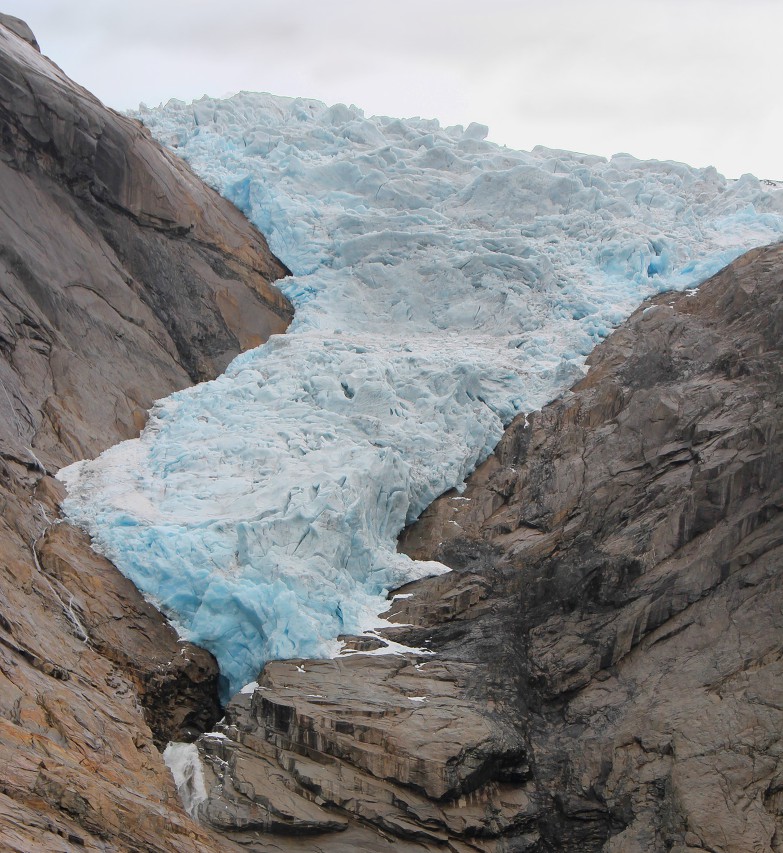
The older the ice, the less air there is in it, and the juicier its blue color. The age of these ice masses is more than a thousand years.
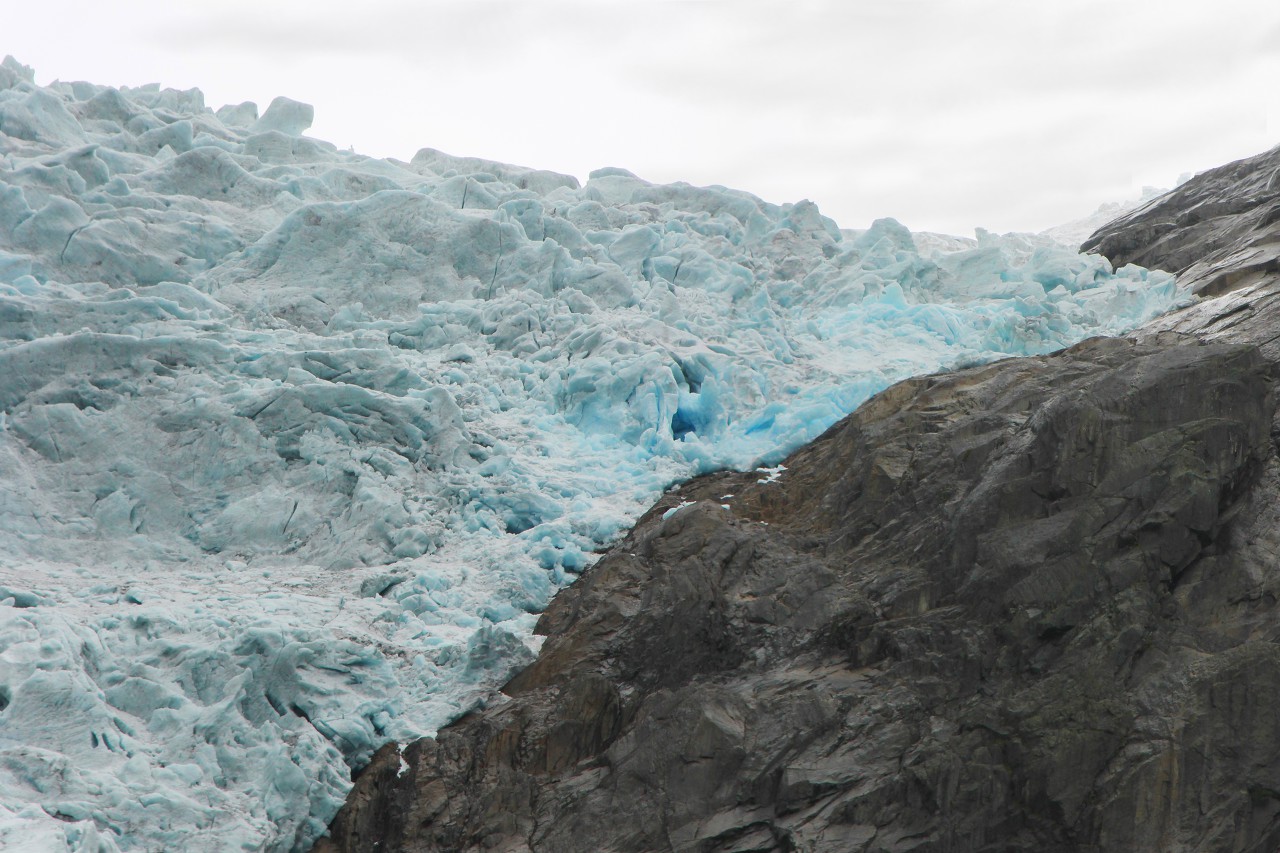
Unfortunately, these days, as a result of climate change, glaciers are retreating every year. A couple of years ago, this tongue went down to the water, and thousands of years ago, ice covered the entire valley that we just passed.
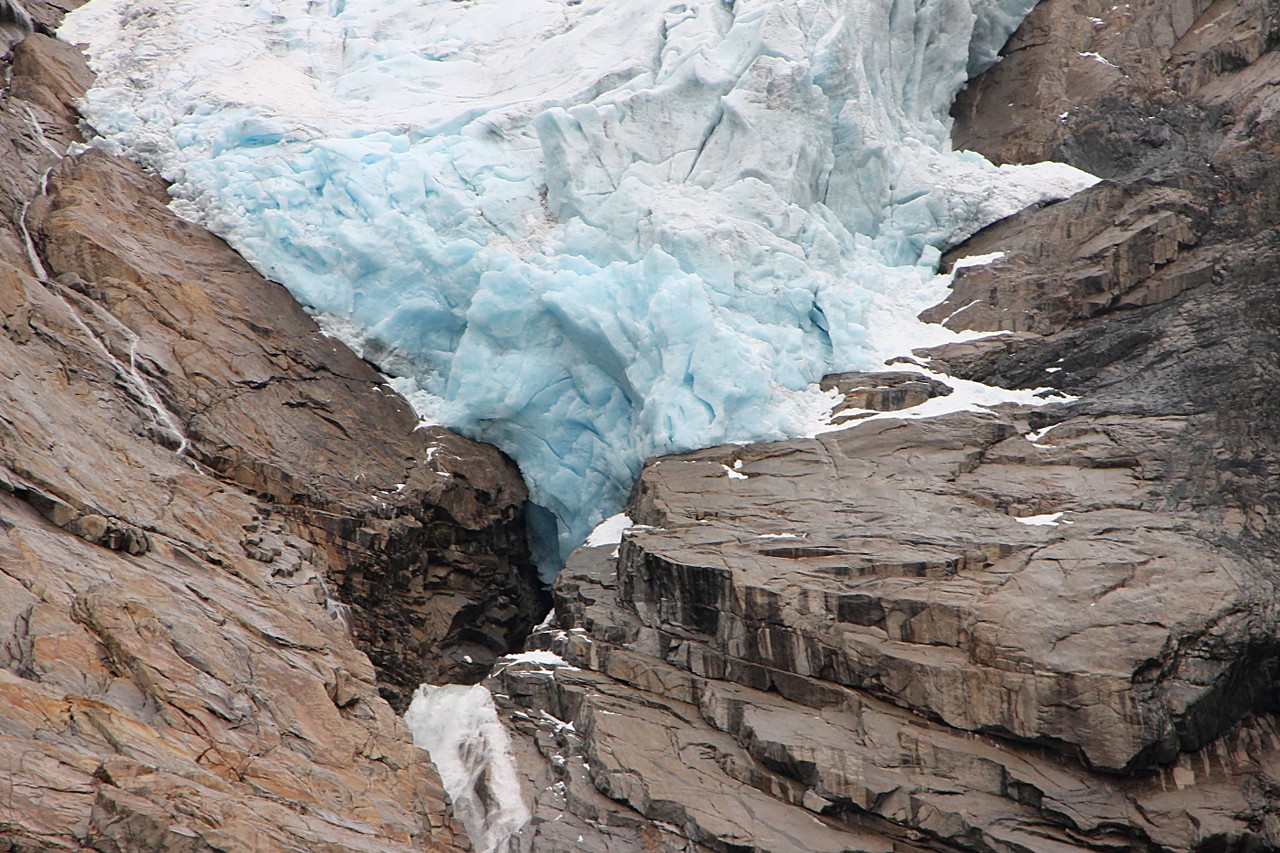
Now only a separate piece of relatively young ice remains below, hidden from the sun's rays by rocks.
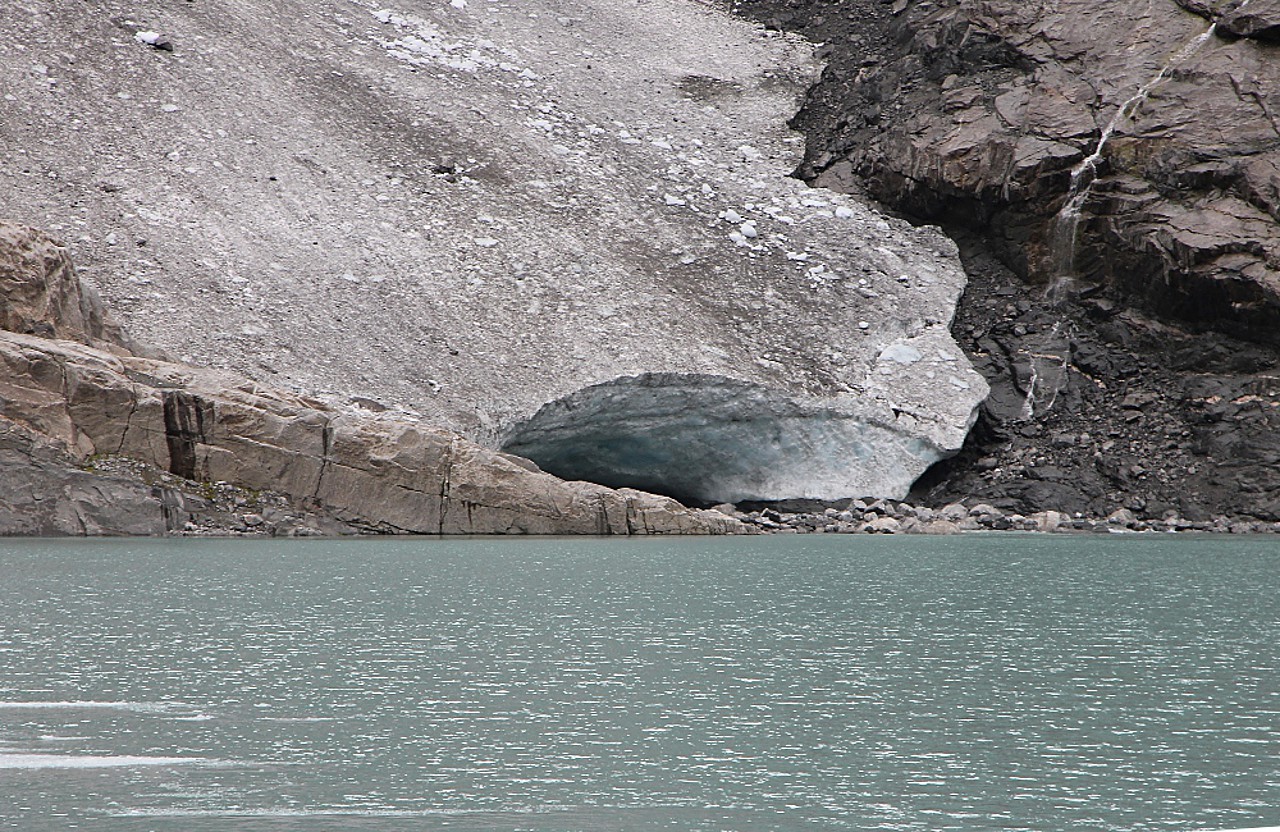
This process can not be called irreversible, during the observation of the glacier several times advanced and retreated. The state of glaciers depends not only on the average annual temperature, but also on the amount of snow that falls. From 1934 to 1951, the glacier retreated 800 meters, and from 1967 to 1997, the lower border returned to 465 meters, closing the entire lake.
